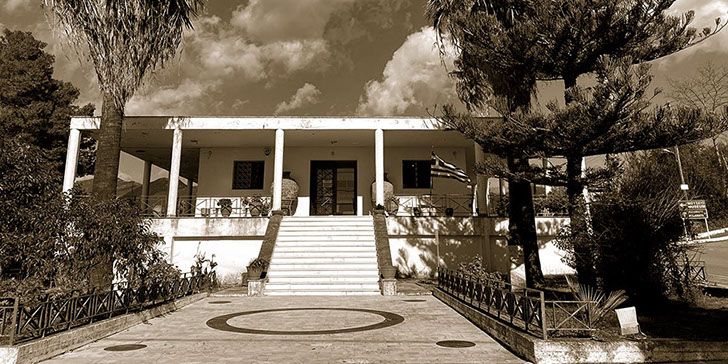

Project Title:
Upgrading of the Archaeological Museum in Chora, Municipality of Pylos–Nestor, Messenia
Region: Peloponnese
Regional Unit: Messenia
Municipality: Pylos–Nestor
Operational Programme: “Peloponnese 2014–2020”

Priority Axis: “Environmental protection – transition to an environmentally friendly economy”
Fund: European Regional Development Fund (ERDF)
Project Budget: €2,812,000.00
MIS Code (OPS): 5129452
Start Date: 01/09/2021
End Date: 31/12/2023
Distribution of Public Expenditure by Beneficiary
-
Beneficiary: Directorate for the Study and Execution of Museum and Cultural Building Works – €2,562,000.00
-
Beneficiary: Ephorate of Antiquities of Messenia (Kalamata) – €250,000.00
Project Deliverables
Subproject 1: Comprehensive restoration and modernization of the Museum building
Subproject 2: Connection of the building to public utility networks
Subproject 3: Structural inspection of the project “Restoration and modernization of the Archaeological Museum in Chora, Municipality of Pylos–Nestor, Messenia” by certified building inspectors
Subproject 4: Transport of archaeological material to and from the Chora Museum, museographic study, lighting design, and installation of the permanent exhibition
The Ephorate of Antiquities of Messenia is the beneficiary of Subprojects 2 and 4.
Subproject 2: Connection of the Museum building to Public Utility Networks
Subproject 4: “Transport of Antiquities and Organization of the Permanent Exhibition at the Archaeological Museum of Chora, Municipality of Pylos–Nestor” under the Action “Upgrading of the Archaeological Museum in Chora, Municipality of Pylos–Nestor, Messenia”
Description
The aim of the project is the restoration and modernization of the existing building infrastructure of the Archaeological Museum of Chora, in the Municipality of Pylos–Nestor, Messenia, in order to create a modern and functional facility with:
-
updated exhibition and public service areas, accessible to people with disabilities (PWDs),
-
storage areas for archaeological finds, and
-
modern electromechanical installations.
The restoration, reinforcement, and modernization of the Museum’s building structures, facilities, and networks, along with the landscaping of the surrounding area, will render the Museum fully functional and accessible. The project also aims to attract a greater number of visitors to the Museum.
The Archaeological Museum of Chora is one of the most important archaeological museums in Greece, housing finds from the excavations of distinguished archaeologists such as Spyridon Marinatos and Carl Blegen. The majority of its exhibits date to the Mycenaean period (ca. 1680–1060 BC), though there are also finds from later historical periods.
The exhibition offers a representative and characteristic overview of the evolution of the Mycenaean civilization, contributing to the understanding of Mycenaean palace art and burial practices in Messenia.
The Museum building, of austere geometric design, was designed in 1955 by architect Patroklos Karantinos, based on the approved architectural plans of the Ministry of National Education and Religious Affairs. The two-storey building (basement and ground floor) is located in the southeastern part of the plot and consists of three main linear volumes, one of which is enclosed on three sides by a portico. The main entrance is accessed from the southwest side via an external staircase.
Under Subproject 2, connections between the Museum and public utility networks will be completed.
Under Subproject 4, titled “Transport of Antiquities and Organization of the Permanent Exhibition at the Archaeological Museum of Chora, Municipality of Pylos–Nestor,” the Ephorate of Antiquities of Messenia is implementing, through direct administration, the following:
-
transportation of archaeological material to and from the Chora Museum,
-
preparation of the museographic study for the permanent exhibition,
-
lighting design for exhibition areas and display cases,
-
digitization and documentation of materials from the Museum’s collections,
-
design and production of interpretive and informational materials,
-
conservation of archaeological material, and
-
procurement of necessary conservation equipment.
Expected Benefits
The project’s completion will make a decisive contribution to the cultural promotion and economic development of the region.
The upgrading of the Archaeological Museum of Chora (Trifylia) will redefine its relationship with the local community and enhance its role as a hub of culture and education.
With the anticipated increase in visitor numbers, the project will bring significant benefits to the local society, boosting tourism and stimulating the regional economy.
The impact and results of the project will be evident both in the academic and scientific community and among the general public, enhancing access to cultural heritage and promoting sustainable regional growth.
